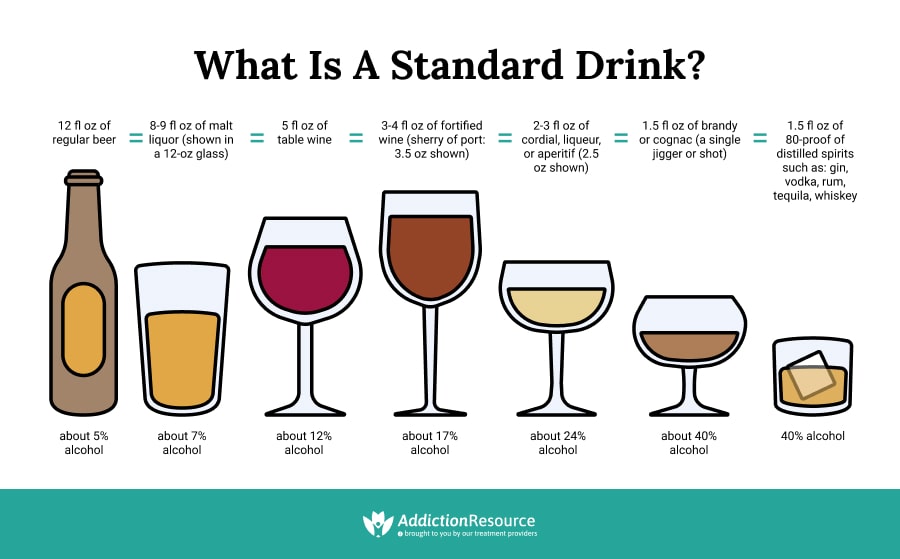Alcohol is one of the most consumed substances worldwide, often present in social gatherings and celebrations. Despite its widespread acceptance, alcohol can have a significant impact on your health and criminal record.
In the U.S. alone, over 300,000 people are arrested annually for public intoxication, and more than 10,000 lives are lost each year due to drunk driving. As well, binge drinking can damage several organs, including the brain, gastrointestinal tract, liver, and heart.
Knowing how long alcohol remains in your system is not just about potentially avoiding a criminal charge but also about taking care of your health. Keep reading to learn how different factors affect how long alcohol stays in your system, the various detection methods, and the implications for your health and safety.
Table Of Contents:
- How Is Alcohol Measured In The Body?
- What Does BAC Stand For?
- What Is EtG On A Drug Test?
- Blood Alcohol Calculator
- How Long Does It Take Alcohol To Leave The System?
- Factors Affecting Alcohol Detection Time
- Does Coffee Help Sober You Up?
- How Long Does It Take Alcohol To Leave System For Alcohol Use Disorder (AUD)?
- Symptoms of Alcohol Use Disorder (AUD)
- How Long Does Alcohol Stay On Your System − Bottom Line
- People Also Ask

How Is Alcohol Measured In The Body?
After you drink alcohol (ethanol), and it enters the bloodstream, your body rapidly works to convert it into non-toxic substances for safe elimination.
Alcohol metabolism primarily involves breaking down ethanol into acetaldehyde, which is then further metabolized into acetic acid and finally into carbon dioxide and water, which can be excreted through breath, urine, and sweat. However, how do you measure alcohol in the body during this process?
There are a couple of ways to measure the amount of alcohol in your body:
- Blood alcohol concentration (BAC) reflects in % the amount of alcohol in a specific volume of blood.
- Breathalyzers measure the amount of alcohol eliminated through the lungs.
- Urine tests can detect or measure the amount of alcohol eliminated through urine.
- Saliva tests use a test strip that indicates a person’s blood alcohol concentration (BAC).
- Hair tests can detect ethyl glucuronide (EtG), a direct metabolite of alcohol, for up to 90 days.
Consider that some of these tests don’t necessarily indicate the current state of intoxication. For example, alcohol can linger in the urine for longer periods, and hair tests can usually provide a long-term history of chronic alcohol use instead.
What Does BAC Stand For?
BAC is a common acronym for the measurement of alcohol in the body. BAC stands for Blood Alcohol Concentration, which is the percentage of alcohol in a person’s bloodstream expressed as a percentage, representing grams of alcohol per 100 milliliters of blood.
Testing for blood alcohol content (BAC) is the most accurate method for measuring alcohol levels in the body and it’s usually what police test for in roadside alcohol breath tests. BAC can have different effects on a person, depending on the amount consumed:
- Mild stimulation: A BAC under 0.05% causes increased heart rate, energy and sociability.
- Peak stimulation: A BAC of 0.05% leads to high euphoria feelings.
- Depressant effects: A BAC above 0.05% causes sluggishness, fatigue, coordinaton, balance and speech impairment.
In the U.S., a BAC level of 0.08% is legally recognized as the threshold for intoxication for drivers aged 21 and over, and exceeding this limit can result in an arrest for DUI.
For commercial drivers, the limit is lower at 0.04%. Individuals under 21 face legal consequences for any detectable BAC above 0.00%. A BAC of 0.40% or higher may put you at a significant risk of coma or death.
What Is EtG On A Drug Test?
Drug tests are part of several health screening procedures, either for work, addiction or overdoses. They help to identify substances involved for accurate treatment.
For example, an EtG test is typically performed to detect the presence of ethyl glucuronide (EtG), a byproduct of alcohol metabolism that may indicate recent alcohol consumption.
EtG can be tested in blood, urine, or saliva. An EtG calculator is useful for estimating alcohol consumption in individuals, particularly in contexts such as rehabilitation programs, legal cases, and workplace testing, as it provides a longer detection window than other methods.
Blood Alcohol Calculator
If you’ve wondered how alcohol affects your body or wanted to know your limits, a Blood Alcohol Calculator (BAC) is a useful tool that estimates the concentration of alcohol in your bloodstream based on different factors like number of drinks you had, your weight, and gender.
Use our BAC calculator down below to quickly check your estimated levels and make sure you’re staying within safe limits:
 BAC Calculator
BAC Calculator
How Do BAC Calculators Work?
BAC calculators use formulas based on average values, such as the amount of water in the body and the blood and average metabolism rates. Use our online blood alcohol content calculator by:
Entering your details:
- Weight: Your body weight significantly affects how alcohol affects you.
- Gender: Men and women metabolize alcohol differently.
- Time: The amount of time since you started drinking.
Logging your drinks:
- Type of Drink: Select your drinks, from beer to wine to cocktails.
- Quantity: Input the number of drinks or specific measurements.
Getting your estimated results:
- Our calculator instantly provides an estimate of your current BAC.
- Learn if you’re within safe driving limits.
- If you are out of safe limits, make sensible choices regarding driving or other high-focus activities.
How Long Does It Take Alcohol To Leave The System?
Consider that BAC significantly varies, the reason why several tests are available to measure alcohol concentration in the body. For example, alcohol metabolism and elimination vary significantly due to genetic and environmental factors. The half-life of alcohol ranges from 1 to 4.5 hours, with the average person metabolizing about one standard drink (14 grams in the U.S.) per hour.
However, due to a 3–4-fold variability in elimination rates, alcohol detection test results can differ significantly based on individual factors such as diet, age, and chronic alcohol consumption. While these tests offer approximate estimations, they may not be uniformly accurate for everyone.
How Long Does Alcohol Stay Detectable In Your Blood?
Ethanol can be detected in the blood for 6 to 12 hours after the last drink, providing precise information about a person’s intoxication level at a specific time, such as after a road accident or a driving under the influence (DUI) arrest.
How Long Does Alcohol Stay In Your System For A Breathalyzer?
A breathalyzer test measures the alcohol concentration in a person’s breath, known as breath alcohol content (BrAC).
Since a blood test involves extraction and takes longer to collect and analyze, breathalyzer testing is a quick option for police on the road. This device typically features bands that estimate the amount of alcohol in the body at least 15 minutes after ingestion.
For instance, when two bands light up, it indicates a blood alcohol concentration (BAC) between 0.05% and 0.10%. The concentrations of alcohol in the blood and breath are highly correlated, and you can expect to test positive for a breathalyzer test 12 hours after your last drink.
How Long Does Alcohol Stay In Urine Test?
Unlike blood or breath, alcohol cannot be detected in the urine 12 hours after the last drink. However, ethyl glucuronide (EtG), a direct metabolite of ethanol, can be detected in urine for up to 80 hours after ethanol consumption, depending on the amount consumed.
Can You Test BAC In Saliva?
Yes, saliva can be used to test alcohol blood concentration. A saliva alcohol test strip (AST) is a non-invasive method that uses a mouth swab and a chemical assay test strip to measure BAC.
The strip changes in color when it comes in contact with alcohol and the color change indicates the BAC level. ASTs can detect BAC levels from 0.02% to 0.3%.
How Long Does Alcohol Stay In Your System For A Saliva Test?
The detection time for alcohol in saliva is typically within 12 to 24 hours. However, residual alcoholic beverages in the mouth can cause false alcohol levels. It’s recommended to wait 20 min after the last sip of the alcoholic drink for testing alcohol in oral fluids.
How Long Does Alcohol Stay In Your Hair?
Based on the standard alcohol detection window for hair testing, alcohol can be detected in a hair test up to 90 days after the last drink.
These tests are relatively more expensive and tedious than other tests. Yet, they are highly useful for long-term monitoring of alcohol consumption, making them valuable in contexts such as rehabilitation programs, legal cases, and employment screening where a longer detection period is needed to assess patterns of alcohol use over time.
Factors Affecting Alcohol Detection Time
Each person will react to alcohol in different ways. Some people can metabolize alcohol faster, while others take longer to get alcohol out of their system. These factors affect how long alcohol shows up in an alcohol test.
Some of the factors affecting alcohol detection time are listed below:
Volume of Alcohol
The higher the volume consumed per unit of time, the longer it will likely stay in the body. For example, drinking multiple shots of hard liquor in a short time frame will result in a higher and longer-lasting blood alcohol concentration (BAC) than sipping a glass of wine over the same period.
The type of alcoholic beverage consumed (beer, wine, spirits) and its alcohol content also play a significant role in determining how long alcohol remains detectable. Find below the alcoholic content among different beverages:

Gender
Women are more likely to become intoxicated than men. Factors such as body fat percentage, gastric absorption, and genetic differences influence these variations. Women have less water in their bodies to dilute alcohol, causing their BAC to rise more quickly. Additionally, women produce lower levels of the enzymes needed to break down ethanol, leading to more alcohol stored in the body.
Body Weight and Build
While body weight and build do not alter the alcohol half-life, they affect the elimination rate and intoxication concentration. People who weigh more or have larger builds accumulate ethanol in their bodies more slowly, taking longer to reach intoxication. They also tend to sober up faster as their larger bodies dilute alcohol more effectively.
Medical Condition
A person’s medical history may also impact the rate of alcohol absorption. If you are wondering: How long does alcohol stay in your system after gastric bypass? The answer may differ from those who haven’t undergone this surgery.
A study among morbidly obese adults in the U.S. found that those who had undergone bariatric surgery or gastric bypass took longer to become intoxicated. In contrast, those with extra weight but no surgery became intoxicated sooner.
Medications and Diet
Alcohol interactions with certain drugs and foods can be dangerous. It’s advisable not to mix medications with alcohol as it can increase the sedative effects of drugs such as:
- Benzodiazepines
- Barbiturates
- Antihistamines
- Antidepressants
- Antipsychotics
- Opioids and opiates
Mixing alcohol with fermented foods can intensify intoxication, while diuretics like coffee and tea can dehydrate the body, leading to a higher BAC being reached sooner.
Does Coffee Help Sober You Up?
No, coffee doesn’t help you sober up. There is no way to accelerate the process of sobering up, which takes place in the liver.
While drinking caffeine can make you feel more alert, it doesn’t affect how your liver processes alcohol. The stimulant properties of alcohol can temporarily mask the sedative effects of alcohol, which can lead to a false feeling of sobriety. The best course of action is to keep yourself hydrated, get some rest and eat nutrient-rich foods.
How Long Does It Take Alcohol To Leave System For Alcohol Use Disorder (AUD)?
The time it takes for alcohol to leave the system also varies depending on the individual’s drinking habits and experience. A study provided the mean rate of alcohol elimination among various groups:
- Nondrinkers: 12 mg/dL per hour
- Social drinkers: 15 mg/dL per hour
- Long-term drinkers: 30 mg/dL per hour
This suggests that the rate of elimination increases with the drinking experience. Long-term drinkers develop alcohol tolerance that allows their bodies to metabolize alcohol more quickly than nondrinkers or social drinkers.
However, faster elimination rates in long-term drinkers do not mean that alcohol does less harm to their bodies. Chronic drinking can lead to serious health issues, including liver disease, cardiovascular problems, and neurological damage.
Symptoms of Alcohol Use Disorder (AUD)
Recognizing the symptoms of AUD is crucial for seeking timely help and getting into recovery as soon as possible. Common alcohol abuse symptoms include:
- Inability to limit drinking
- Continuing to drink despite physical, social, or interpersonal problems
- Needing to drink more to achieve the same effect (tolerance)
- Experiencing alcohol withdrawal symptoms when not drinking
- Spending a lot of time drinking or recovering from drinking
- Giving up activities previously enjoyed in favor of drinking
If you or someone you know shows symptoms of alcoholism, it is essential to seek help. Chronic alcohol use is a treatable condition, and many resources and rehab centers are available to support recovery and sobriety.
How Long Does Alcohol Stay On Your System − Bottom Line
Alcohol affects many tissues in the body, and its impact depends on the concentration, the duration of exposure and your susceptibility to alcohol, ranging from weight and sex, food, medications, and even race! While alcohol can be reduced by half by your body in an hour, it depends on your drinking habit.
Binge drinking can lead to dangerously high BAC levels and severe health consequences, including alcohol poisoning. Repeated binge drinking episodes can also cause long-term damage to vital organs, leaving no room for doubt about why alcohol is the fourth leading preventable cause of death in the U.S.
Understanding how long alcohol stays in your system can help you plan your drinking decisions to avoid jail or a potentially fatal accident. If you or someone you know struggles with alcohol use, seek help from healthcare professionals or local support services.
People Also Ask
How long does it take for alcohol to fully leave your system?
The liver processes approximately 90-98% of the alcohol you consume. The time it takes to eliminate alcohol from your system entirely depends on factors such as the amount consumed, individual metabolism, and overall health.
How to get alcohol out of your system faster?
To help your body process alcohol more efficiently, stay hydrated by drinking plenty of water, eat healthy foods to support metabolism, and get enough rest. However, there is no method to speed up the body’s natural metabolism of alcohol significantly.
How long does alcohol stay in your system to test positive?
Alcohol can be detected in your system for up to 12 hours via breathalyzer or blood tests and up to 90 days in hair tests. A positive alcohol test depends on the amount consumed, individual metabolism, and the specific detection method.
Hope Without Commitment
Find the best treatment options. Call our free and confidential helpline
Most private insurances accepted
Page Sources
- Drug Related Crime Statistics [2023]: Offenses involving drug use. (2024, May 2). NCDAS. https://drugabusestatistics.org/drug-related-crime-statistics/
- White, A. M., Tapert, S., & Shukla, S. D. (2018, January 1). Binge Drinking: Predictors, patterns, and consequences. PubMed Central (PMC). https://www.ncbi.nlm.nih.gov/pmc/articles/PMC6104965/
- Zakhari, S. (2006). Overview: How is alcohol metabolize d by the body? PubMed Central (PMC). https://www.ncbi.nlm.nih.gov/pmc/articles/PMC6527027/
- Peterson, K. (2004). Biomarkers for Alcohol Use and Abuse: A summary. PubMed Central (PMC). https://www.ncbi.nlm.nih.gov/pmc/articles/PMC6601655/
- Wang, L., et al. (2022). Estimating the time of last drinking from blood ethyl glucuronide and ethyl sulphate concentrations. Scientific Reports, 12(1), 1-7. https://doi.org/10.1038/s41598-022-18527-8
- Cederbaum, A. I. (2012). Alcohol metabolism. Clinics in Liver Disease, 16(4), 667–685. https://doi.org/10.1016/j.cld.2012.08.002
- Andresen-Streichert, H., et al. (2018). Alcohol biomarkers in clinical and forensic contexts. Deutsches Ärzteblatt International. https://doi.org/10.3238/arztebl.2018.0309
- Hingson, R. W., Heeren, T., & Winter, M. R. (1999). Preventing impaired driving. PubMed Central (PMC). https://www.ncbi.nlm.nih.gov/pmc/articles/PMC6761696/
- Pham, Y. L., & Beauchamp, J. (2021). Breath Biomarkers in Diagnostic Applications. Molecules, 26(18), 5514. https://doi.org/10.3390/molecules26185514
- Grodin, E. N., et al. (2020). Sensitivity and specificity of a commercial urinary ethyl glucuronide (ETG) test in heavy drinkers. Addictive Behaviors Reports, 11. https://doi.org/10.1016/j.abrep.2020.100249
- Høiseth, G., et al. (2010). Ethyl Glucuronide Concentrations in Oral Fluid, Blood, and Urine after Volunteers Drank 0.5 and 1.0 g/kg Doses of Ethanol. Journal of Analytical Toxicology. 34(6), 319–324. https://doi.org/10.1093/jat/34.6.319
- Haller, D. L., et al. (2010). Hair Analysis Versus Conventional Methods of Drug Testing in Substance Abusers Seeking Organ Transplantation. American Journal of Transplantation, 10(5), 1305-1311. https://doi.org/10.1111/j.1600-6143.2010.03090.x
- Hagedorn, J. C., et al. (2007). Does gastric bypass alter alcohol metabolism? Surgery for Obesity and Related Diseases, 3(5), 543-548. https://doi.org/10.1016/j.soard.2007.07.003
- Driscoll, D., Bleecker, G., Francis, J., & Jaberi, A. (2020). Acute hemodialysis for treatment of severe ethanol intoxication. Kidney Medicine, 2(6), 793–796. https://doi.org/10.1016/j.xkme.2020.06.012
- Alcohol-Related deaths. (2024, April 16). Centers for Disease Control and Prevention. https://www.cdc.gov/alcohol/features/excessive-alcohol-deaths.html

 Authored by
Authored by  Reviewed by
Reviewed by 